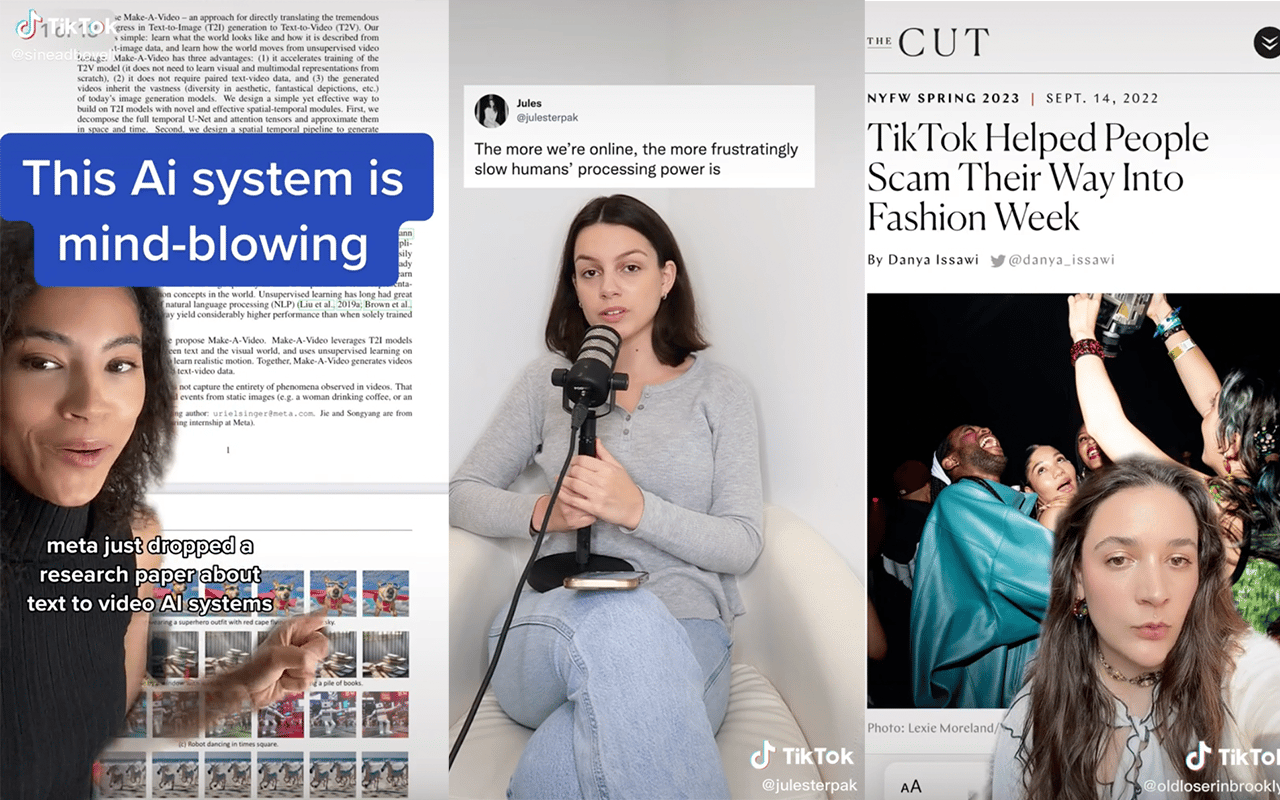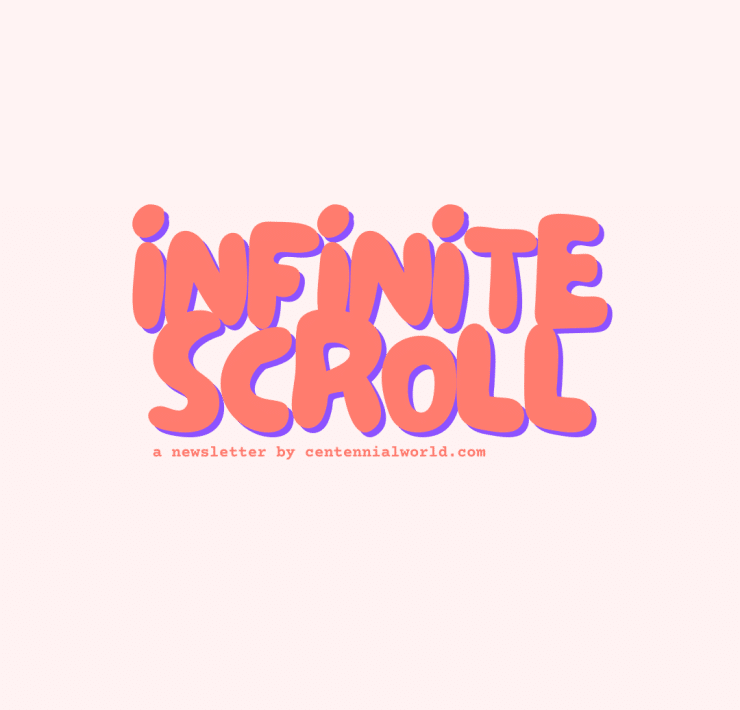
It seems like the TikTok FYP is changing – gone are the days of 15-second dance challenges and lip-syncing thirst traps from teenage boys still trying to grow facial hair.
Over the past year, a new genre of content has swept the app, one that seeks to summarise, predict, or investigate the cultural zeitgeist. The creators who bring you these commentary videos are known as ‘analyst creators’.
Creating TikToks in a video-essay style, analyst creators can be trend forecasters, pop culture writers, or creatives in the entertainment industry looking to capitalise on their insider scoop. From “casual Instagram” to “vibe shifts”, their aim is to help make sense of the internet’s ever-changing culture.
@inspiredmediaco point is casual IG is a ✨vibbeeeee✨ not just the look but the MINDSET #casualinstagram #contentcreatorhelp #contentcreatortips2022 #socialmediastrategytips #growyourinstagram #instagramtipsdaily
♬ original sound – Alyssa
While the ideas presented by these creators are not always groundbreaking or original, the quick, personable, and digestible presentation style is uniquely suitable for the short-form video app, particularly with the introduction of 10-minute videos earlier this year.
“We’re starting to see a distinction between the creators who know how to edit and keep their audience engaged, versus those who got lucky off of TikTok’s algorithm,” said Alessandro Bogliari, CEO of the Influencer Marketing Factory, to Vox. “It used to be that you just had to dance or lip-sync really well for 30 seconds. That’s no longer enough.”
Consumerism is out, value is in
The rise of analyst creators coincides with the recent “vibe shift” within the influencer industry from aspirational content to relatable creators with valuable messages.
As global disaster and tragedy seem to rage on around us, what used to serve as a coping mechanism (mindlessly watching unboxings and shopping hauls), is now a reminder of the disparities that exist within our society. Audiences now expect a value-add with what they consume — content that doesn’t singularly revolve around the creator, but engages with and illuminates the world around them.
Despite the surge in analysis videos as of late, few creators have succeeded in building a brand off their commentary. Those who have are generally informational synthesisers, able “to stylishly cut through an infinite and rambling internet freighted with big ideas,” as Safy-Hallan Farah wrote for TechCrunch, turning “this abundance of information into something generative rather than overwhelming.” These creators may also contextualise information for audiences to provide insight into why people care about a certain phenomenon or trend.
Two of the best examples of this are TikTok “reporters” Sinead Bovell and Jules Terpak, who help users make sense of topics like world news and the cultural landscape online without the distrust that can sometimes plague traditional media, politicians, and journalists. The ability to leave a comment directly on the story being presented encourages users to riff off existing theories and observations to form their own conclusions, whilst establishing a trusting relationship with the creator themselves.
@julesterpak Advice column with @washingtonpost
♬ original sound – Jules Terpak
Democratising knowledge
A primary function of analyst creators is help democratise knowledge by providing a glimpse into industries that usually keep ‘normal people’ out. Industries like fashion, TV, and film traditionally hold archaic and classist views, and are notorious for gatekeeping information to maintain exclusivity.
As @DTSTrends explained on TikTok, “Analyst creators have been democratising access to content that usually costs thousands of dollars in yearly subscriptions.”
Creators like @GirlBossTown (AKA Robyn Delmonte) have gone viral on TikTok for sharing industry secrets, tips and ideas. Robyn is affectionately dubbed the “Internet’s Agent” and proposes PR plans for celebrities and brands. She is an expert in connecting the dots across pop culture and public relations, sharing her knowledge with her followers while lifting the veil on the realities of Hollywood and fame.
@girlbosstown #greenscreen @airbnb @barbie
♬ Barbie Girl – Lady Aqua
Beyond TikTok
Analyst creators are uniquely positioned to expand their careers beyond TikTok. Kiera Breaugh, who gives her regular commentary on pop culture and internet culture on TikTok, has taken her analysis content to other platforms such as YouTube and a weekly podcast. Creators like Drew Afualo, Kate Glavan and Nadya Okamoto have done the same.
If strategic in the early days of their career, those creating analysis content may have more longevity than vloggers or trend-based creators as the style lends itself to all platforms.
This also means this new style influencing can be incredibly lucrative for both the creator and brands that partner with them. Analyst creators have the ability to become truly established in the nuances of their subculture or niche — gaining deeper trust with their audience across several platforms. This is essential as users grow tired of obvious promoted content like hauls and unboxings.
For example, Haute le Mode, who is known for his well-informed and highly opinionated high-fashion roasts, was sponsored by Valentino to create a TikTok explainer on its haute couture collection.
Analyst creators are quickly becoming a substitute for subscriptions and PR consultants. With information and ideas made easily accessible thanks to these creators, there will undoubtedly be a shift in the need for traditional media companies if their popularity continues to grow.
@hautelemode #ad Some Art References from the @valentino Fall 2021 Haute Couture collection explained 🙂 #ValentinoDesAtelier #ad
♬ original sound – HauteLeMode
While there are many benefits to the democratisation of information, some people think that analysis content may not always be a good thing, as a level of gatekeeping can be required to maintain professionalism and safety in certain industries.
Fashion analyst, Mandy Lee AKA @oldloserinbrooklyn, commented on the recent backlash influencers faced for attending New York Fashion Week. In her TikTok video she questioned, “At what point does the motivation of not becoming a gatekeeper start crossing the line?” Mandy referred to an article in The Cut by Danya Issawi that covered influencers sneaking into NYFW after TikTok users posted the email addresses of several publicists and planners working on the event.
“This doesn’t feel like it’s helping democratise fashion, it feels like it is making a bit of a mockery of the industry… from the angle of respect to the people who have been working for months and months to make these events and shows happen,” she said.
While Mandy admitted that “NYFW is a marketing exercise at this point,” and that it is hard to gauge where the line is to gatekeep, the same argument could be made for industries where expertise is required to separate hobbyist from professional, such as journalism, fitness, or medicine.
@oldloserinbrooklyn An open conversation on democratizing fashion at nyfw, gatekeeping and respect, article from The Cut by @danya #nyfw #gatekeeping #fashionweek #thecut
♬ Her – Megan Thee Stallion
Though some companies have adapted their marketing and influencer strategies to leverage the rise of analyst creators, social media still has a ways to go in understanding how these creators fit within the cultural landscape.
Only time will tell if these creators will stick out this “vibe shift,” or if analysis content is simply the internet’s current flash in the pan trend.
- Simran Pasrichahttps://centennialworld.com/author/simranpasricha/
- Simran Pasrichahttps://centennialworld.com/author/simranpasricha/
- Simran Pasrichahttps://centennialworld.com/author/simranpasricha/
- Simran Pasrichahttps://centennialworld.com/author/simranpasricha/

